Michal Malyska
ICDBigBird: A Contextual Embedding Model for ICD Code Classification
Apr 21, 2022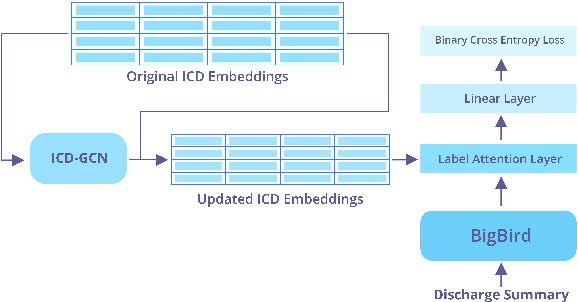
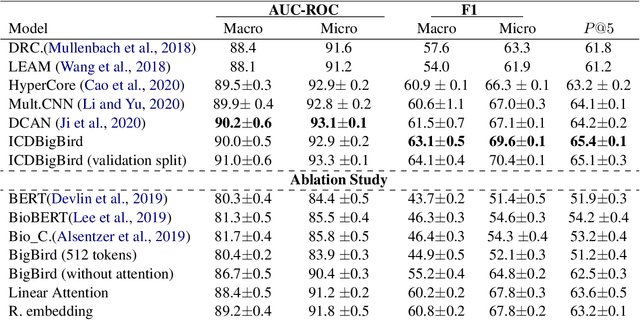
Abstract:The International Classification of Diseases (ICD) system is the international standard for classifying diseases and procedures during a healthcare encounter and is widely used for healthcare reporting and management purposes. Assigning correct codes for clinical procedures is important for clinical, operational, and financial decision-making in healthcare. Contextual word embedding models have achieved state-of-the-art results in multiple NLP tasks. However, these models have yet to achieve state-of-the-art results in the ICD classification task since one of their main disadvantages is that they can only process documents that contain a small number of tokens which is rarely the case with real patient notes. In this paper, we introduce ICDBigBird a BigBird-based model which can integrate a Graph Convolutional Network (GCN), that takes advantage of the relations between ICD codes in order to create 'enriched' representations of their embeddings, with a BigBird contextual model that can process larger documents. Our experiments on a real-world clinical dataset demonstrate the effectiveness of our BigBird-based model on the ICD classification task as it outperforms the previous state-of-the-art models.
Active learning for medical code assignment
Apr 12, 2021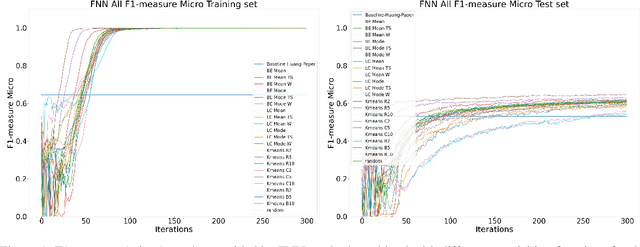
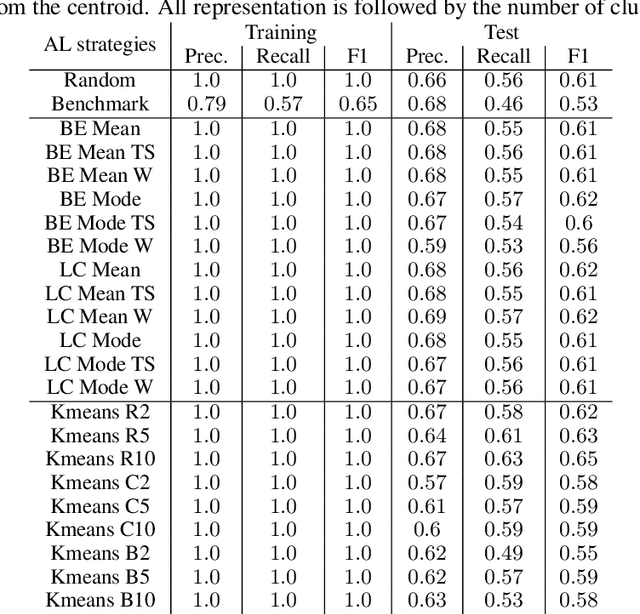

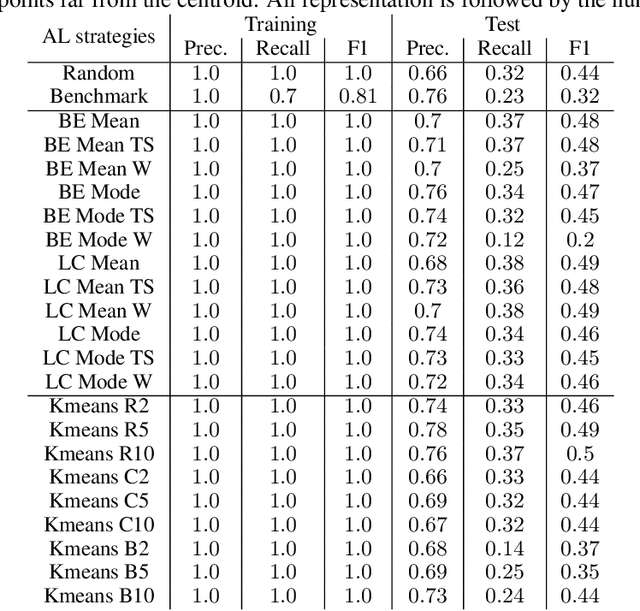
Abstract:Machine Learning (ML) is widely used to automatically extract meaningful information from Electronic Health Records (EHR) to support operational, clinical, and financial decision-making. However, ML models require a large number of annotated examples to provide satisfactory results, which is not possible in most healthcare scenarios due to the high cost of clinician-labeled data. Active Learning (AL) is a process of selecting the most informative instances to be labeled by an expert to further train a supervised algorithm. We demonstrate the effectiveness of AL in multi-label text classification in the clinical domain. In this context, we apply a set of well-known AL methods to help automatically assign ICD-9 codes on the MIMIC-III dataset. Our results show that the selection of informative instances provides satisfactory classification with a significantly reduced training set (8.3\% of the total instances). We conclude that AL methods can significantly reduce the manual annotation cost while preserving model performance.
Multiple Sclerosis Severity Classification From Clinical Text
Oct 29, 2020



Abstract:Multiple Sclerosis (MS) is a chronic, inflammatory and degenerative neurological disease, which is monitored by a specialist using the Expanded Disability Status Scale (EDSS) and recorded in unstructured text in the form of a neurology consult note. An EDSS measurement contains an overall "EDSS" score and several functional subscores. Typically, expert knowledge is required to interpret consult notes and generate these scores. Previous approaches used limited context length Word2Vec embeddings and keyword searches to predict scores given a consult note, but often failed when scores were not explicitly stated. In this work, we present MS-BERT, the first publicly available transformer model trained on real clinical data other than MIMIC. Next, we present MSBC, a classifier that applies MS-BERT to generate embeddings and predict EDSS and functional subscores. Lastly, we explore combining MSBC with other models through the use of Snorkel to generate scores for unlabelled consult notes. MSBC achieves state-of-the-art performance on all metrics and prediction tasks and outperforms the models generated from the Snorkel ensemble. We improve Macro-F1 by 0.12 (to 0.88) for predicting EDSS and on average by 0.29 (to 0.63) for predicting functional subscores over previous Word2Vec CNN and rule-based approaches.
 Add to Chrome
Add to Chrome Add to Firefox
Add to Firefox Add to Edge
Add to Edge